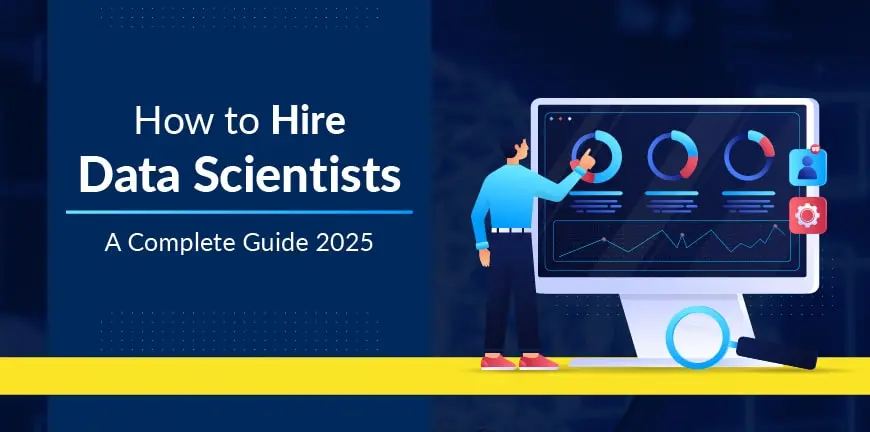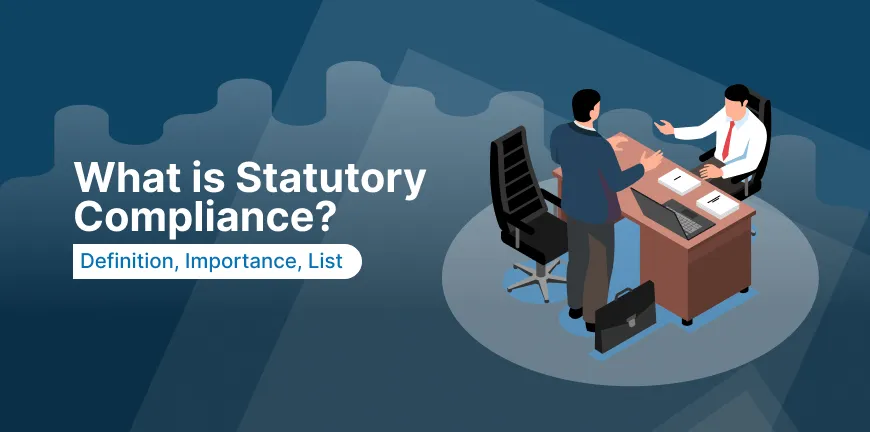
A Step-by-Step Guide on How to Hire Data Scientists
01/11/2024
How Data Mining and Mini Satellites Could Be India’s Winning Bet in Outer Space?
05/11/2024Technology today continues to evolve, and is making an impact on business productivity, daily lives of consumers etc. Owing to this, the compliance standards have expanded of lately, to protect the vast data and monitor and safeguard user privacy. To ensure the same, implementation of strict compliance monitoring standards and policies have become even more essential for organizations. To make sure of the smooth running of operations, organizations must proactively establish effective safety systems and meet regulatory compliance standards.
Compliance Monitoring Meaning
Compliance Monitoring is the process of making sure that an organization adheres to all legal, regulatory and company’s internal policies and procedures. The process of compliance monitoring involves reviewing and assessing the operations, activities and processes of an organization to ensure that they meet all relevant rules and guidelines.
To monitor compliance, both manual and automated systems are used, and privacy and protection of data are maintained in accordance with the regulatory compliance standards. The compliance monitoring process is dynamic in nature. It involves surveillance, review and analysis of how the organization is performing, the risk factors involved and in turn enables the compliance team to identify areas of non-compliance and take the right actions to prevent costly fines and penalties.
What is a Compliance Policy?
A compliance policy refers to a set of guidelines that are set to make sure the organization and its employees adhere to the standard rules and regulatory requirements set by the government as well as the internal policies of the company. The compliance policy outlines the guidelines for employee behaviour, operations and business practices ensuring that the company adheres to all laws and regulations.
How to Create a Compliance Monitoring Plan?
A Compliance monitoring plan must be designed with the following considerations-
- It must cover all the compliance risks that any department may face in the organisation. And this must be followed by the steps you take to eliminate these risks and address them effectively.
- Needs to be proportionate to the size, complexity and nature of your business, and the nature and number of risks it faces
To create an effective compliance monitoring plan, here are some steps you can follow-
1. Outline the purpose of the compliance monitoring plan
First and foremost, it’s important that organization identify the regulations, industry standards and internal policies they must comply with that include data privacy laws, health and safety standards etc. This can help reduce the compliance risks, avoid penalties and promote ethical behaviour.
2. Figure out the areas that require compliance monitoring
An organization or a business may have various departments or avenues that may require strict compliance monitoring. Identifying these specific areas is essential. Upon identification, you must assess all business functions and map out the regulatory requirements that must be met. This could be labour laws for HR, data privacy and protection rules for IT etc.
3. Assign compliance officers to different departments
It’s essential to allocate compliance monitoring responsibilities to team members or have designated compliance officers in order to oversee the areas that require compliance. Make sure that you outline their roles and responsibilities like conducting audits, monitoring procedures or handle non- compliance reports.
4. Develop procedures for monitoring compliance
Different areas of your business require specific procedures to be carried out to monitor compliance. You can start by establishing methods for gathering compliance related data like reviews, audits and system reports; determine how frequently the different areas need compliance monitoring, whether weekly, monthly or quarterly. To track adherence to the requirements you may use automated tools, where appropriate.
5. Assess risks and prioritize the critical compliance areas
You must conduct a risk assessment to identify the high-risk compliance areas. Carefully evaluate the risks associated with each compliance area, especially the high-risk areas, and what happens in case of non-compliance and changes in regulatory requirements. This compliance report can help come up with the right compliance monitoring solutions.
6. Establish reporting and communication protocols
Set up the right guidelines to report the findings of compliance. Having a reporting structure that includes templates, communication channels and other compliance updates, is essential to communicate the status of compliance or any violations with regards to stakeholders, management and regulatory bodies. The tools used for reporting must be user friendly, also include channels for employees to report non-compliance.
7. Address non-compliance issues
To address issues of non-compliance, there is a need to take certain corrective actions to address the violations that happen. To do this effectively, you must create a plan with the right actions like updating procedures, implement new controls. Once you have the plan in place, review how effectively the compliance monitoring plan is working and make modifications based on feedback and changes in regulations.
8. Train your employees
Keeping compliance isn’t the responsibility of only one person or one department. Each and every employee in an organization must take up this responsibility. They must be aware of the compliance policies and procedures and reporting methods and must be able identify if there is a compliance violation and report the same. In order to see this through, the right training must be given to employees.
9. Document the compliance monitoring plan
As an organization, you must document your entire compliance monitoring plan with all the elements. It could include monitoring procedures, objectives, protocols, actions etc. This particular document can be shared with stakeholders and can be used as a standard reference for monitoring compliance.
What is the Importance of Compliance Policy?
Compliance policies play an important role in identifying the necessary compliance requirements and how they can be integrated into the existing structure of the organization. Compliance policies help organizations in
- Assessing the cybersecurity risks and vulnerabilities
- Having the right security controls that eliminate risks
- Preventing the interruption of operations and activities due to cyber attacks
- Create and develop a plan for other compliance measures
Compliance policies are not limited to enterprises and large companies. Small and medium-sized businesses that don’t prioritize cybersecurity or regulatory compliance by implementing policies make them prime targets for hackers to exploit their vulnerabilities.
What is the Purpose of Compliance Monitoring?
Basic monitoring can become insufficient for organizations as a deep understanding of data processing and management is necessary. With the expanding infrastructure, continuous monitoring becomes essential. Organizations, most times implement compliance monitoring even if it isn’t mandatory as regulators sometimes impose fines even for the smallest breaches, declaring it as non-compliance and posing it as company’s failure to implement proper safety measures.
Organizations typically deploy a team to oversee compliance, but some aspects can be automated. By combining manual and automated monitoring, companies can ensure data privacy is safeguarded, and all compliance standards are consistently met across the regulations they must adhere to.
A well-crafted compliance monitoring plan helps organizations proactively manage risks, ensure adherence to regulations, and foster a culture of accountability. By defining clear objectives, assigning responsibilities, and setting up robust monitoring procedures, companies can detect and correct compliance issues efficiently while maintaining transparency and legal integrity. Regular updates and employee training further enhance the plan’s effectiveness.
Frequently Asked Questions
1. What is the purpose of a compliance audit?
A compliance audit can assess how well an organization adheres to internal bylaws, rules and regulations, standards, and even codes of conduct. An audit is also often used to review the effectiveness of an organization’s internal controls using multiple types of audits.
2. Who is involved in compliance monitoring?
Effective compliance monitoring involves various departments and individuals throughout the organization. Employee training helps every employee understand their role in maintaining an organization’s compliance.
3. What are three techniques for compliance monitoring?
Three common techniques for monitoring compliance are regular audits, having clear policies and procedures in place, and ensuring thorough documentation. These practices allow organizations to stay organized and up to date with their compliance program requirements.
Contact Us For Business Enquiry

Hariharan Iyer
Hariharan Iyer is the Vice President – Operations at ALP Consulting, bringing over 40+ years of experience in HR outsourcing and labour law compliance. He leads end-to-end HRO operations, ensuring process efficiency, statutory compliance, and seamless service delivery for clients across industries. With a strong background in labour law governance and workforce management, Hariharan plays a key role in driving operational excellence and compliance-led HR solutions at ALP Consulting.




